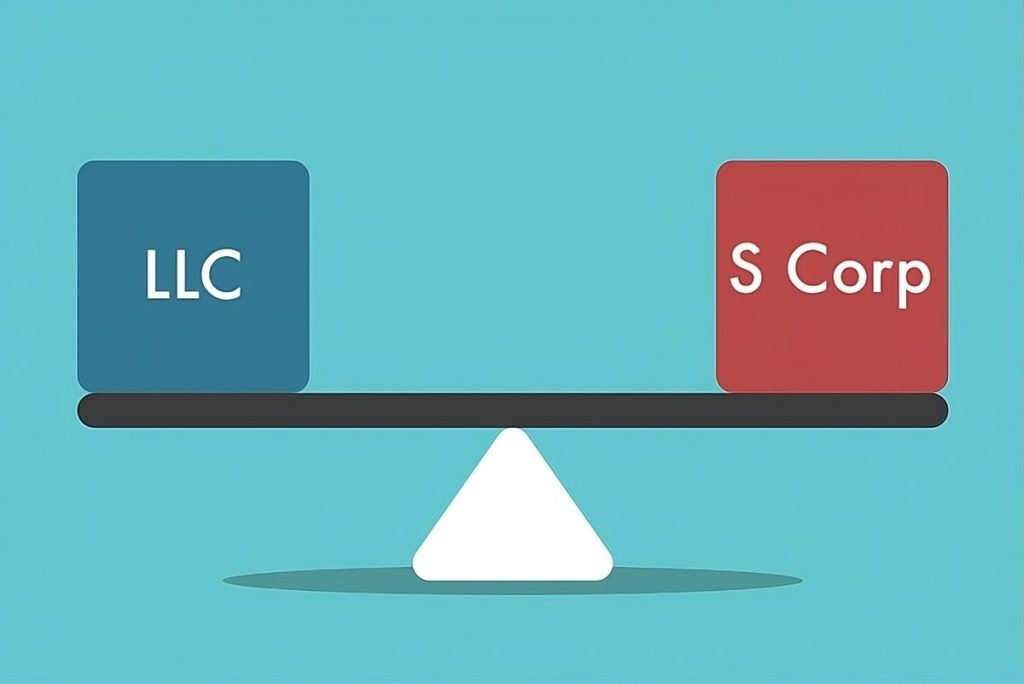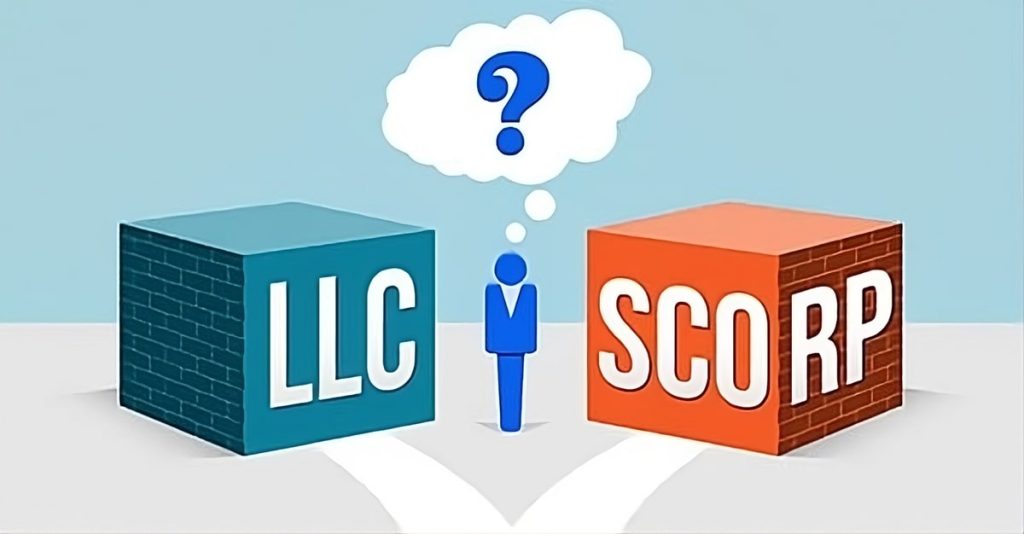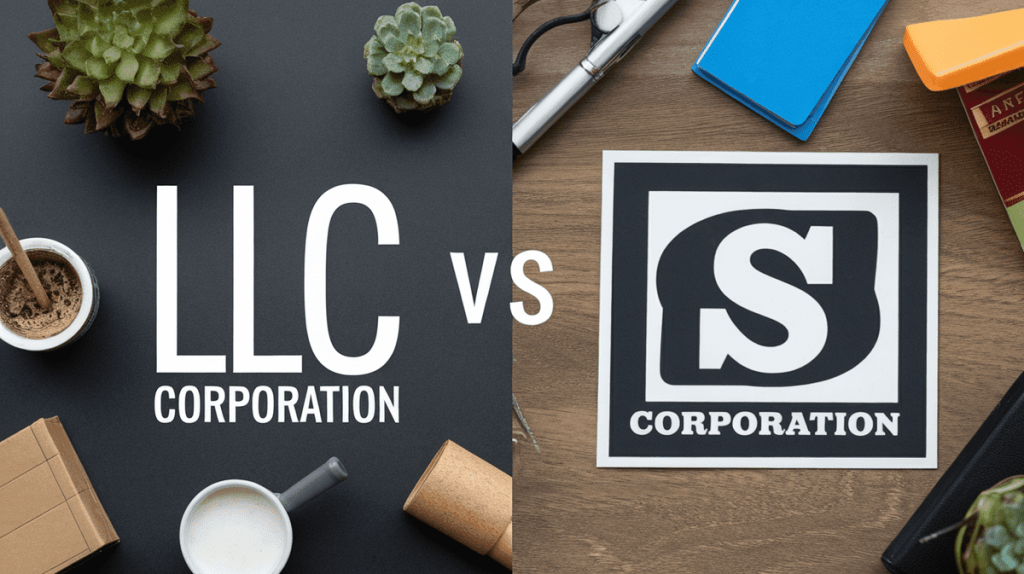Selecting the right business structure impacts your taxes, legal responsibilities, and daily operations. Both LLCs and S Corporations provide limited liability protection and pass-through taxation, but they differ in ownership rules, management requirements, and tax benefits. This guide breaks down these differences to help you make an informed decision.
Introduction
Your choice of business structure directly influences your taxes, legal responsibilities, and daily operations. LLCs and S Corporations are two of the most popular options for small businesses. According to the U.S. Small Business Administration, around 30% of small businesses in the U.S. are structured as LLCs, while S Corporations make up another 30%.
Overview of LLCs
An LLC offers a blend of limited liability protection and tax flexibility. It is a straightforward option, especially for small businesses and startups.
- Formation and Management: LLCs are formed by filing Articles of Organization with the state. Management can be handled by the members (owners) or by managers appointed by the members.
- Taxation: By default, single-member LLCs are taxed as sole proprietorships, and multi-member LLCs are taxed as partnerships. However, LLCs can elect S Corporation taxation to potentially lower self-employment taxes.
- Ownership: LLCs have no restrictions on the number or type of members. This flexibility allows for a wide range of ownership configurations, including individuals, other LLCs, corporations, and foreign entities.
Table 1: Key Features of LLCs
| Feature | Description |
|---|---|
| Liability | Personal assets protected from business debts |
| Ownership | No restrictions on the number or type of members |
| Management | Can be managed by members or appointed managers |
| Taxation | Pass-through taxation by default; option to elect S Corp tax |
| Formation | Formed by filing Articles of Organization with the state |

Overview of S Corporations
An S Corporation offers the tax benefits of a pass-through entity with the formal structure of a corporation. It is more suitable for businesses that meet its specific requirements.
- Formation and Management: S Corporations are formed by incorporating and then electing S Corp status with the IRS. They must follow strict rules, such as maintaining a board of directors and holding regular shareholder meetings.
- Taxation: S Corporations avoid the double taxation that C Corporations face. Shareholders report business income and losses on their personal tax returns.
- Ownership: S Corporations are limited to 100 shareholders, who must be U.S. citizens or residents. This limitation restricts ownership flexibility but can simplify management.
Table 2: Key Features of S Corporations
| Feature | Description |
|---|---|
| Liability | Personal assets protected from business debts |
| Ownership | Limited to 100 shareholders, all U.S. citizens or residents |
| Management | Formal structure with board of directors and officers |
| Taxation | Pass-through taxation; no double taxation |
| Formation | Requires incorporation and IRS election for S Corp status |
Key Differences Between LLCs and S Corporations
Ownership Restrictions
- LLCs: No ownership limits; can have an unlimited number of members, including non-U.S. citizens, corporations, and other LLCs.
- S Corporations: Restricted to 100 shareholders, all of whom must be U.S. citizens or residents. S Corporations cannot be owned by other corporations or LLCs.
Taxation
- LLCs: Default pass-through taxation, but can opt for S Corporation or C Corporation taxation. LLCs taxed as S Corporations can reduce self-employment taxes by paying salaries and distributing remaining profits as dividends.
- S Corporations: Mandatory pass-through taxation. S Corporations must comply with IRS rules, including the requirement to pay reasonable salaries to shareholder-employees.
Table 3: Tax Differences Between LLCs and S Corporations
| Feature | LLC | S Corporation |
|---|---|---|
| Default Taxation | Pass-through (sole proprietorship/partnership) | Pass-through taxation |
| Self-Employment Tax | Subject to self-employment tax on all earnings | Can reduce self-employment tax through salary and dividends |
| Tax Flexibility | Can elect to be taxed as an S Corp or C Corp | Must adhere to S Corp rules |
| Reporting | Simpler tax reporting | Requires filing IRS Form 1120S and maintaining formal records |
Management Structure
- LLCs: Flexible management options, allowing either member-managed or manager-managed structures. No mandatory board of directors or formal meetings.
- S Corporations: Requires a formal structure with a board of directors, elected officers, and regular shareholder meetings. This formality ensures clarity and accountability in decision-making.
Advantages and Disadvantages
Advantages of LLCs
- Flexibility: LLCs offer broad flexibility in ownership, management, and taxation. They are easier to establish and maintain, with fewer formalities.
- Tax Options: LLCs can choose their tax treatment, allowing them to optimize their tax situation depending on the business’s needs.
Advantages of S Corporations
- Tax Savings: S Corporations can reduce self-employment taxes by paying reasonable salaries and distributing profits as dividends.
- Credibility: S Corporations often present a more professional image, which can be beneficial in dealings with banks, investors, and partners.
Disadvantages
- LLCs: May face higher self-employment taxes if not structured properly. Some states impose additional fees or taxes on LLCs.
- S Corporations: More complex and costly to establish and maintain due to additional IRS requirements and formalities. Ownership restrictions can limit growth potential.

Which Should You Choose?
Choosing between an LLC and an S Corporation depends on your business’s specific needs.
- Choose an LLC if:
- You need flexibility in ownership and management.
- You prefer a simpler, less formal structure.
- You plan to reinvest profits back into the business.
- Choose an S Corporation if:
- You aim to save on self-employment taxes.
- You plan to seek investment from a small group of U.S. investors.
- You prefer a formal structure and are willing to adhere to additional compliance requirements.
Partnering with Merchanto.org for Chargeback Prevention
Managing financial transactions effectively is essential, regardless of your business structure. Chargebacks can be a significant issue for businesses, leading to revenue loss and increased operational costs. Merchanto.org, a recognized partner of VISA and MasterCard, offers specialized chargeback prevention services. They help businesses mitigate the risk of chargebacks, ensuring smoother transactions and maintaining strong relationships with payment processors. For more information, visit Merchanto.org.
Conclusion
The choice between an LLC and an S Corporation is crucial and impacts various aspects of your business, including liability protection, taxes, and daily operations. LLCs offer flexibility, while S Corporations provide tax advantages. It’s essential to evaluate your business needs and consult with professionals to determine the best structure for your situation.
This article offers a comprehensive guide to making this decision, supported by facts and figures to ensure you have the information needed to choose wisely.



